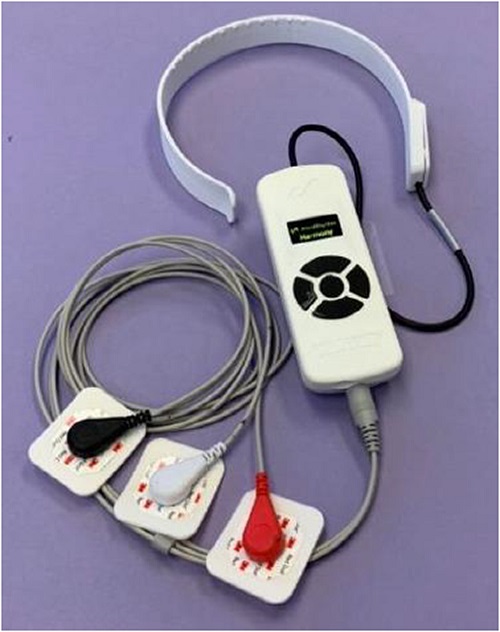
The first data stemming from the pilot study of a portable medical device that can be utilized by emergency medical technicians to detect a major stroke while enroute to the hospital has been published in the journal Academic Emergency Medicine.
Wayne State University School of Medicine Associate Professor of Emergency Medicine James Paxton, M.D., M.B.A., led the research, with the support of 18 sub-investigators.“Headpulse measurement can reliably identify large-vessel occlusion stroke in prehospital suspected stroke patients: Results from the EPISODE-PS-COVID study” supports Wayne State’s position as a leader in innovative research to advance medicine, and is a prime example of WSU’s Prosperity Agenda. By fostering innovation and entrepreneurship, WSU strives to propel Michigan’s competitiveness in 21st century commerce.

Often fatal, and highly debilitating, large vessel occlusion ischemic strokes, or LVOs, represent only one-third of acute ischemic strokes in the United States yet are associated with two-thirds of post-stroke dependence and greater than 90% of post-stroke mortality.
“This article is also the first official public statement that our research reveals that Harmony, the device tested in the study, can be effectively used in the pre-hospital setting to reliably identify LVO,” Dr. Paxton said. “We believe this is the first time any novel device has been able to make this claim. We feel that the use of the device will be important in improving outcomes for stroke patients.”
In terms of enrollment, the study is the largest pre-hospital study of a device to detect large vessel occlusive stroke ever completed. A total of 594 subjects suspected of acute stroke were enrolled from 11 study hospitals in Detroit, Kalamazoo, Saginaw and San Francisco during a 21-month period. Patients received HarmonyTM 5000 device placement by pre-hospital EMS personnel, 158 of whom provided informed consent to move forward in the study. LVO stroke diagnosis was confirmed by medical chart review, including standard of care brain imaging studies.

The device, invented by MindRhythm Inc., based in Cupertino, Calif., incorporates accelerometers into a headset placed on the patient’s head. It measures a signal in the brain discovered by MindRhythm that it has named HeadPulse™ – tiny movements blood makes through the brain’s blood vessels shaking the brain following a heartbeat. Dr. Paxton compared this motion to checking a wrist pulse, but a change to a normal HeadPulse™ signal can be an indicator of significant neurological concerns.
“This study published in the journal, Academic Emergency Medicine, is an excellent example of how research at Wayne State University is empowering health in our urban neighborhoods and fueling innovation,” said Ezemenari M. Obasi, Ph.D., vice president for research at Wayne State. “The findings from this study may give EMS providers the ability to confirm diagnosis of LVO strokes earlier that in turn can lead to quicker treatment to improve patient outcomes.”
Collaborators include WSU School of Medicine’s Associate Professor Howard Klausner, M.D.; Assistant Professor of Emergency Medicine John Wilburn, M.D; and Assistant Professor Stefanie Wise, M.D.; Western Michigan University Homer Stryker, M.D. School of Medicine Radiologist K. Derek Kreitel, M.D., and Clinical Assistant Professor of Medicine Larry Morgan, D.O.; University of California at San Francisco Associate Professor of Emergency Medicine Debbie Madhok, M.D.; California Pacific Medical Center Department of Neurology’s Nobl Barazangi, M.D.; Ascension St. Mary’s of Saginaw, Mich., Department of Emergency Medicine Steven McLean, M.D.; and WSU Associate Professor Robert Dunne, M.D.